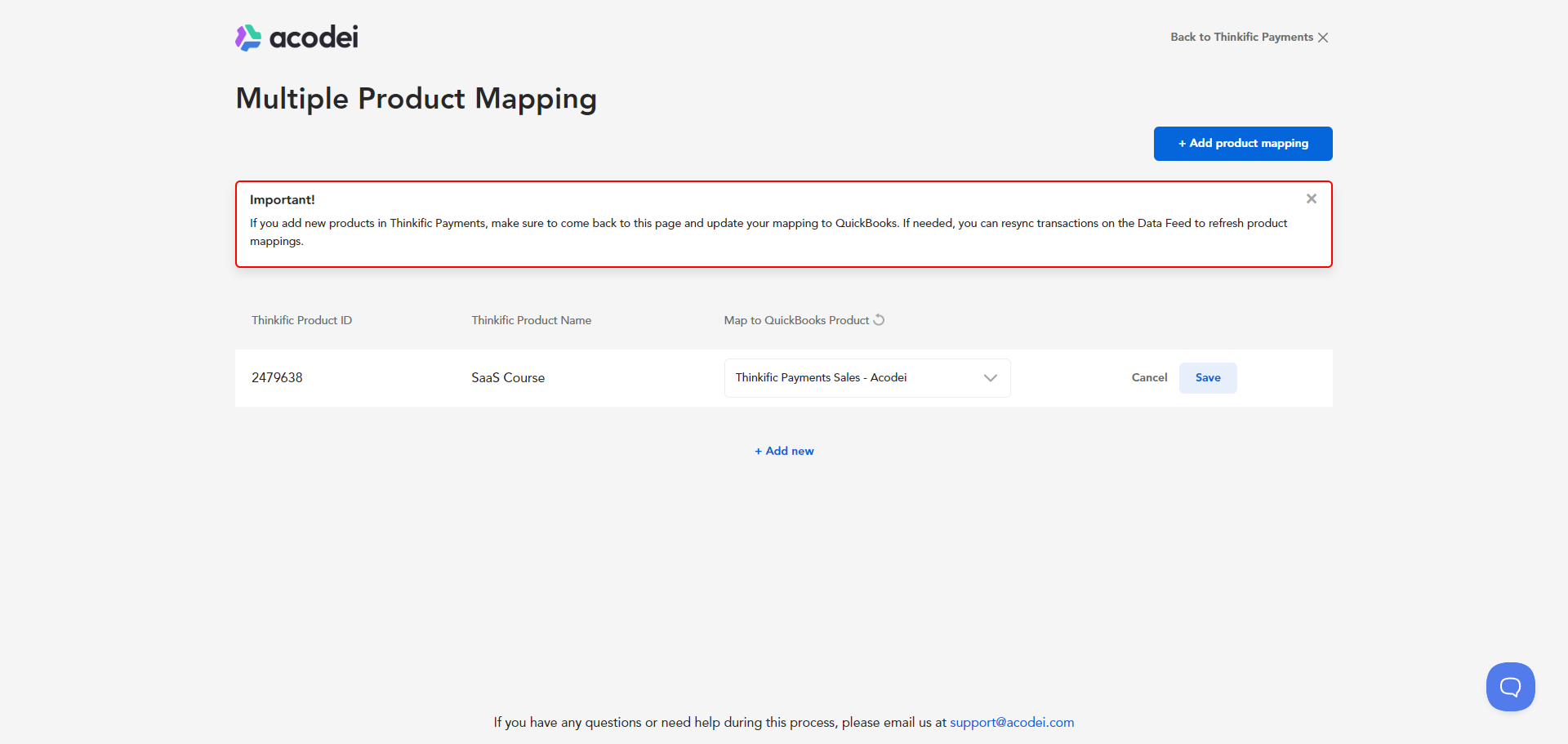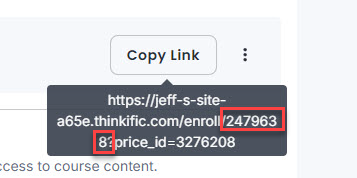Thinkific
Acodei automates the transfer of financial data from Thinkific to QuickBooks. Sales, refunds, fees, and payouts sync automatically to eliminate the need for manual data entry, saving time and ensuring accurate accounting.

Scope of the Integration
All transactions from the Thinkific-QuickBooks integration sync in real time. Our service covers the following aspects of Thinkific Payments data:
| Thinkific Action | Integration Action |
|---|---|
| Sale | Sales made in Thinkific are reflected in QuickBooks using Sales Receipts. |
| Refund | Refunds made in Thinkific are reflected in QuickBooks using Refund Receipts. |
| Payout | Depending on your settings, Thinkific payouts are synced into QuickBooks using Bank Deposits or Transfers. |
| Fee | Depending on your settings, Thinkific processing fees are recorded in QuickBooks using Sales Receipts or Expenses. |
| Tax | Thinkific remits tax on your behalf. Tax can be included with other Thinkfiic fees or as a standalone expense. |
In the Thinkific-QuickBooks app settings, you can customize customer data according to your preferences. You can import customer name, email, and billing details, choose some portion of that data, or sync a default customer name like Thinkific Customer. Customer names are synced to QuickBooks in the Display Name field and are matched by existing customer names.
Holding Accounts
By default, Acodei creates a holding account for you. This holding account tracks your Thinkific Payments Balance in QuickBooks. In the default setup, transfers (from holding to checking accounts) are created in QuickBooks to represent the payout. If you prefer a bank deposit containing all your sales and refunds, please change your holding account to an Undeposited Funds asset type.
Products and Accounts
Products in QuickBooks refer to a business's individual items or services. In the context of Thinkific, these are courses or other products a merchant sells. Account in QuickBooks refers to a financial account used in bookkeeping that is more general than a Product. For example, multiple products could feed into the “Sales” income account, which is represented on your Profit/Loss Statement.
During onboarding, you will be asked to select a general account, such as Sales, to accept revenue. Then, Acodei will automatically create a corresponding product. Later, you can see the products and accounts on the account configuration page. You can also manually create a product in QuickBooks and map it to an account for Sales, Refunds, or Fees.
Multiple Product Mapping
You will need to follow several steps to map your Thinkific courses to different accounts on your chart of accounts in QuickBooks.
First, make sure your products are created and organized in QuickBooks Online. Products created in QuickBooks should be mapped to the desired income account.
Next, within the Thinkific-QuickBooks app, enable Multiple Product Mapping.

Acodei pre-populates the mapping screen based on your most recent transactions.

To map more products, follow these steps to retrieve the course code from Thinkific:
-
Go to your Courses in Thinkific
-
Click on the Course you'd like to map
-
Visit the "Pricing" tab within the course
-
Find the "Copy Link" button
-
The Thinkific Product ID is the first listed ID as shown in this example:

The link for this price is https://jeff-s-site-a65e.thinkific.com/enroll/2479638?price_id=3276208, and 2479638 is the Thinkific Product ID to use on the Acodei mapping page.
-
Return to the Multiple Product Mapping page and click "Add New". Note that the mapping is completed based on the Product ID, not the Product Name, so typos are not important in the name field.
-
Ensure products are created in QuickBooks to map your Thinkific product.
If you have questions about the Thinkific-QuickBooks integration or need specialized support, please contact us directly at support@acodei.com.